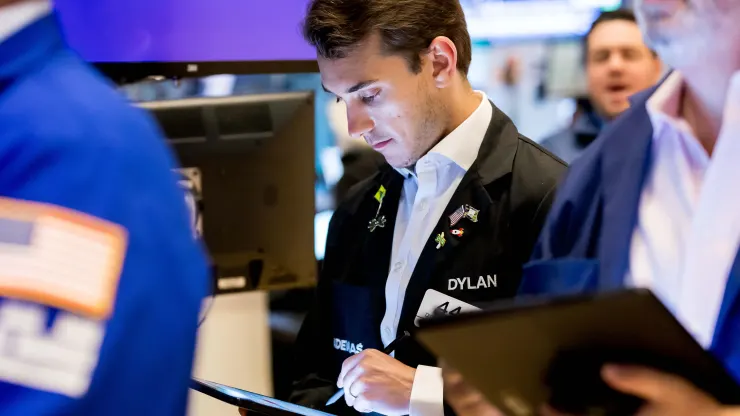Stock futures jumped early Monday after U.S. legislators were able to come to a temporary agreement that staved off a government shutdown.
Futures tied to the Dow Jones Industrial Average rose 144 points, or 0.42%. S&P 500 futures gained 0.45%, while Nasdaq 100 futures added 0.65%.
The Senate passed a continuing resolution with just hours to spare before a midnight deadline Saturday, which was then signed by President Joe Biden into law. The bill keeps the government open for 45 more days, an extended period that lawmakers can use to finalize funding legislation.
“Investors don’t like to be run to the edge of the cliff constantly,” said Jamie Cox, managing partner at Harris Financial. With “not having a shutdown, we should see a very positive reaction in markets.”
Futures gains were limited as investors feared lawmakers were headed for another shutdown fight eventually as Saturday’s agreement did nothing about brewing disagreements on overall government spending levels, the border and Ukraine.
“Markets are going to start to discount this being a 2024 event, as opposed to a 2023,” Cox said. “They’re just going to continue to kick the can down the road and push this into an election year.”
The looming threat of a government shutdown weighed on investors last week, which also marked the end of the trading month and quarter. Investors feared a shutdown could further weigh on a U.S. economy already seeing slowing growth under the weight of the highest interest rates in 15 years.
September marked the worst monthly performance of the year for the S&P 500 and Nasdaq Composite. The broad S&P 500 index finished the month down 4.9% and the quarter 3.7% lower, while the technology-heavy Nasdaq Composite dropped 5.8% in the month and 4.1% in the quarter. The blue-chip Dow ended the month 3.5% lower and the quarter 2.6% in the red.
But the indexes are still up on the year despite the pullback, underscoring the strength of the rally seen in the first half of the year. The S&P 500 is down about 6% from its 2023 high close in July, but still up 11% for the year.
Investors will watch for economic data due Monday on purchasing and construction spending. Later in the week, attention will turn to a string of reports offering insight into the health of the labor market, including Friday’s all important monthly payrolls data.

